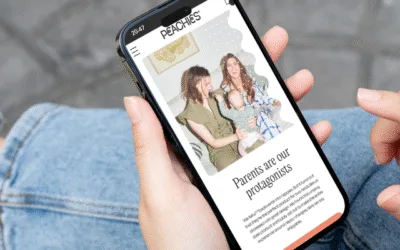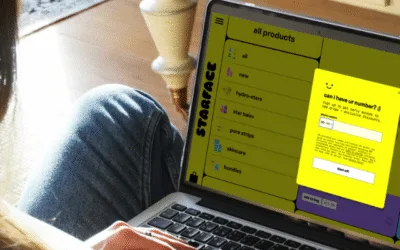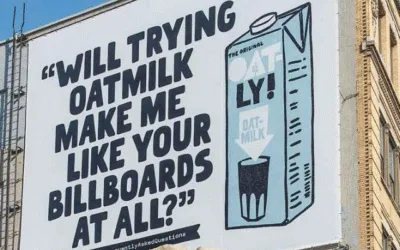Peachies beat Pampers by selling sleep, not nappies. Learn their Ladder of Why messaging trick to make your copy resonate.
3 super-smart copywriting tricks you can steal from Who Gives a Crap
Some products just aren't sexy. But in a forgettable category, your copy doesn't have to be forgettable too. And Who Gives a Crap nail their copy.

Get pro copy tips, branding tricks and e-comm insights directly to your inbox every Tuesday.
We’re super excited to get into this week’s newsletter because a few weeks back, one of you legends hit reply and said this:

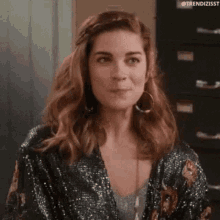
It’s hardly surprising that we both bloody love Who Gives A Crap (a mission-led brand with a bold voice? What’s not to love?!) so this was right up our alley.
And yeah, there is a lot more going on in their copy than just being funny and making bum jokes.
So this week, we thought we’d break down what makes their humour work so well and how that all ties back to their mission.
You ready? Let’s do it.
👋 Quick side note: got a brand you’d like us to break down in a future email? Just hit reply and let us know!
💡 This week’s big idea: in a forgettable category, your copy doesn’t have to be forgettable too.
We hate to say it, but some products just aren’t sexy.
Toilet paper. Hygiene products. Mattresses. Kitchen roll. Washing up liquid…
The copy for these kinds of products has to work extra hard to compensate for that almost invisible, awkward or everyday quality they have baked in to their brand.And so, most brands take one of three routes:
👉 They hide the awkwardness behind euphamisms and soft language. Think cute pandas or puppies, talk of ply and lots of bouncy, floating language.
👉 They get hyper-mission-led. By leaning hard on their impact and mission, they get to tip-toe around the awkwardness of their product.
👉 They go so super positive that they end up coming off as a bit fake and contrived. (Have a happy period, anyone?)
And while none of these are bad, per se, there is a better way.
Use your brand voice and humour to meet the discomfort head-on and change the conversation. You can take a taboo or embarrassing product and make it feel safe, funny, and even empowering.
And when you do that, three things happen:
1.Your brand feels more trustworthy (by being honest about the thing everyone else avoids)
2. You make your customer feel seen (because you’re talking about the things they feel, not the things they’re supposed to say)
3. You become unforgettable in a space where everyone blends in or hides their products.
☝️ And no brand does this better than Who Gives A Crap.
So let’s break down how they do it and how you can borrow a few things from the same playbook.
They use humour to earn trust, not just laughs
Toilet paper is about as unsexy as a product can get.
It’s TP. For your bum.
By definition, it kinda lives in a weird space: it’s essential but (preferably) invisible. It’s kind of gross and also kind of boring (no one comes around an says “oh wow, is that a new brand of toilet roll?”).
And almost every toilet paper brand (including the eco ones) fall into the same ways of speaking about their products.
But Who Gives a Crap (even from their name! Who swears in their brand name?) have made a point to flip an industry of euphemisms and quiet taboo on its head with toilet humour and addressing the elephant in the room.
Like in this OOH ad they ran (and won awards for) in 2023… 👇
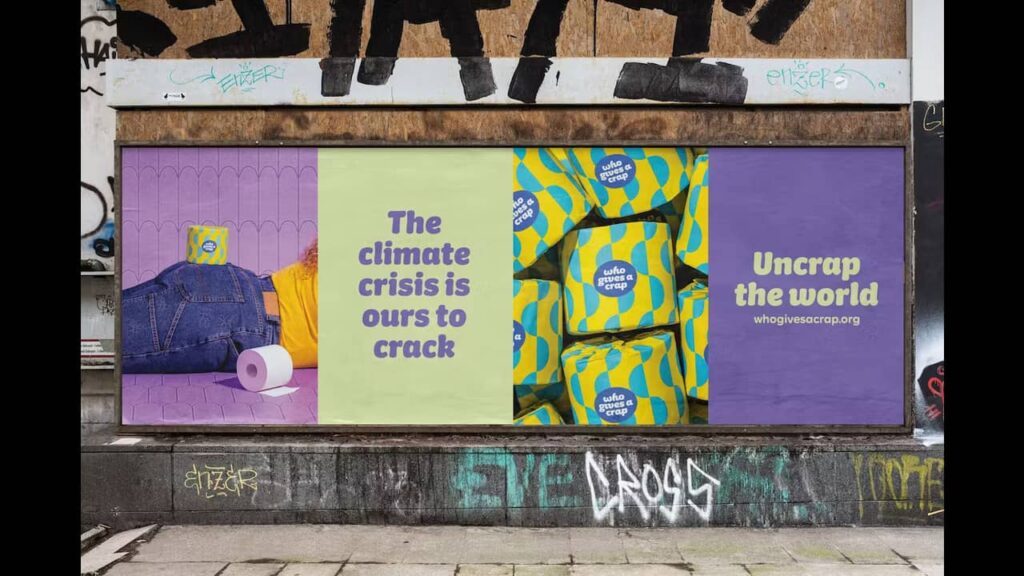
… and in this copy on the inside of their toilet rolls.. 👇
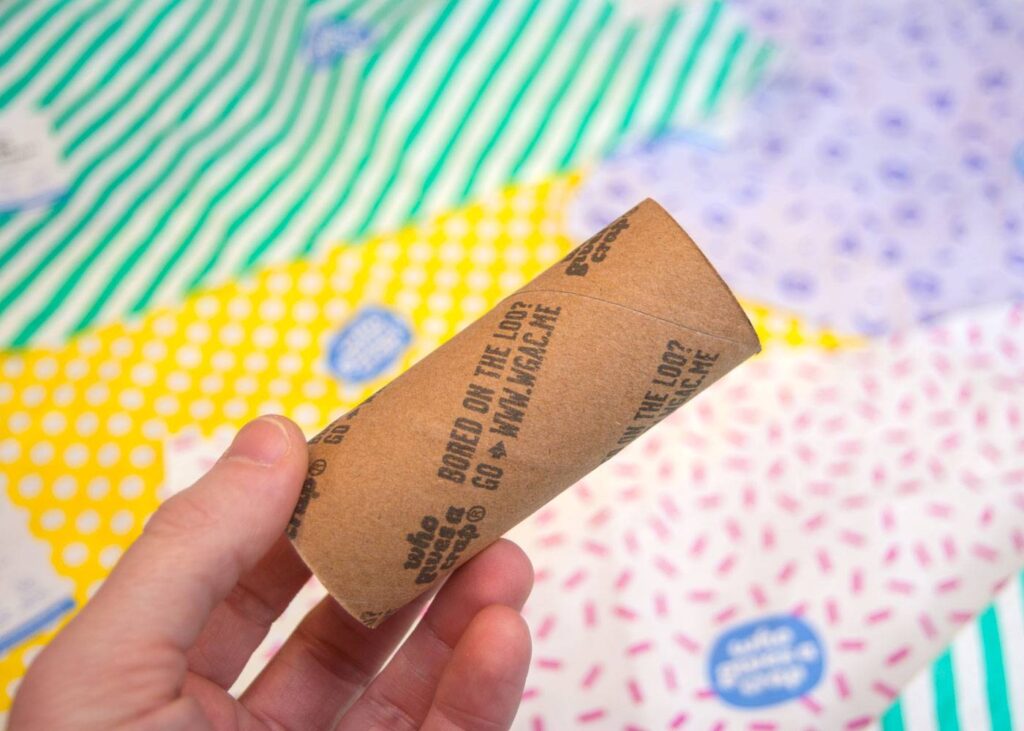
… to this blog post of playlists for different types of trips to the toilet.
It’s a bit gross and a bit childish and a bit silly.
But it’s never too much and it’s never offensive. And it’s always eyeball-grabbing.
So how do they manage it?
If we want to get all nerdy, Who Gives a Crap nail their humour by tapping into something called Benign Violation Theory.
This was an idea developed by psychologists Peter McGraw and Caleb Warren in 2010 to try and answer the question: what makes something funny?
Their theory says that for something to be funny, these two conditions need to happen at the same time:
- It has to violate some kind of norm (a social norm, a moral norm, a linguistic norm, etc.)
- It has to feel safe or “benign” (AKA not threatening or offensive)
If you veer too far in one direction, you end up being offensive for the sake of being offensive, like Ricky Gervais or that awful Brewdog product description we spoke about before. 🤮
Play it too safe and you’re a children’s TV show. Trying to be funny, but playing it too safe. (Exceptions apply here. #BlueyGang4Life.)
And it’s this tightrope of funniness that Who Gives A Crap are constantly navigating (and nailing), by doing things like:
👉 Say the word “crap” in their name. (A linguistic norm broken in a safe way.)
👉 Make jokes about wiping. (A cultural norm broken, in a safe, cheeky way.)
👉 Use packaging with bold colours and cheeky copy. (An industry norm broken in a playful way.)
They break the social norms of how you’re “supposed” to talk about hygiene products. But it’s never full on gross out, mean, or offensive.
It’s always silly, clever, and positive.
☝️ And that’s the benign part. It feels fun, harmless, and inclusive.
And because they always stay on the right side of that line, they end up with a brand voice that’s disarming, confident, and honest. It makes their unsexy product sexy.
☝️ And that’s where the trust-building happens.
How humour builds trust and brand affinity
A 2009 study found that humour in advertising significantly boosts brand liking and trust, especially in low-risk product categories (just like toilet paper).
Think of a brand you like sharing a meme or having a funny headline. It makes you smile a bit, right? All of a sudden, you feel a human connection with a brand that before was just a logo and some words.
👉 It also reduces our inherent resistance to marketing messages
There’s a reason our partners or BFFs normally make us laugh more than anyone else. When we laugh, we become less critical and more open to new ideas.
In fact, a 2011 study found that humorous messages were processed more fluently, making people less likely to feel sold to and more likely to buy.
👉 It makes your brand feel more human
Humour creates a sense of intimacy and shared understanding, especially when it’s self-aware, not try-hard. It tells customers: “Hey, we get it.” That makes your brand feel like a person, not just a product.
Their brand voice isn’t just funny for the sake of being funny. It serves a purpose.
It’s easy to think of Who Gives A Crap’s humour as just a mix of good vibes and Aussie-ness.
(And there is definitely a lot of that in there.)
But it’s actually something a lot deeper, too.
That silliness and playfulness is purposeful.
It’s a tool for lowering defences, grabbing attention, and ultimately making conversations about sanitation and climate justice actually happen.
Because let’s be honest: most people don’t want to talk about wiping their bums.
Or the fact that nearly half the global population still doesn’t have access to safe sanitation.
Or the fact that the planet is in a bad way and needs help.
And it’s super clever that Who Gives A Crap know this.
So instead of trying to guilt you into action or show you footage of deforestation, they make you laugh your way into learning and taking action.
As co-founder Danny Alexander put it in a WARC interview:
Our tone of voice and unique humour really resonate with a lot of people and are a nice antidote to the doom and gloom…By raising awareness about the fact that over one million trees are cut down every day, just to be flushed down the toilet, we help people understand that an easy switch to eco-friendly toilet paper can have a huge impact for them, their family and the planet. Instead of drumming the same eco beat as most eco brands, we wanted to stay true to our tone of voice.
The jokes give you a reason to pay attention.
But it also lowers the barrier to entry into a space that can sometimes feel a bit judgy and complicated.
But with WGAC, you don’t have to understand all the science. You don’t have to read the news and worry yourself to sleep. You can do something that’s good for the planet and it’s fun.
And there’s something we really love about that. It’s disruptive, it’s fun as hell and it’s underlined by some serious science too. (Especially when we know that humour can make us more likely to engage with topics we find scary.)
So yes, they’re silly. And there are loads of bum jokes.
But that silliness is the spoonful of sugar that helps some pretty tough truths go down.
And that’s wicked smaht.
🧠 Pro tip:
we’ve helped shit loads of brands find or hone their voice and the one thing that really separates a decent brand voice from a great one is this idea of congruence.
Is your voice something that’s tacked on the top of what you’re doing as a marketing tool?
Or is it something that is so closely tied to what you do and your mission that they cannot be separated?
☝️ The last kind is the best kind. (But if you’re not there, don’t worry. We’ve dropped some tips below.)
How to put Who Gives A Crap’s clever copy strategy to work for your own brand
We don’t have time to go through everything that Who Gives a Crap do well without this becoming 10,000 words long and leaving you feeling a bit like a third wheel at a party.
But for now? Here’s three things you can steal and use straight away:
✅ Say the quiet part out loud. If there’s an awkwardness, tension, or taboo in your category, don’t dance around it. Tackle it head on and with a bit of humour.
Not sure where that elephant in the room is? Look on Reddit or social media for the things that people are saying about your category that your competitors aren’t saying. There’s your kernel of an idea.
Now, find an angle that feels safe. Ask yourself how you’d joke about this in a meeting with your team? Maybe find a pun that gives you an in. Or think about how your favourite comedian would tackle it.
(Pro tip: copy and paste this email into ChatGPT and ask it to follow the advice and give you some ideas. They’re not perfect, but they’re not bad.)
✅ Make your humour serve your mission. Funny brand voices are good. Funny brand voices that serve a purpose are 🔥.
Ask yourself how you can use your brand voice to lower defences, invite people in, and actually open up the conversation around the hard or awkward or behavior-changing stuff.
(Innocent are great at this too. Their mission was to make it easier and more fun to be healthy. So their smoothies were covered in jokes and puns and funny copy. That’s congruence in action. And our brains love that.)
✅ Make your customer feel clever for buying from you. We know we say this all the time, but it bears repeating, especially for mission-led brands.
Shift your language from “we do good” to “you do good by choosing us.” This cleverly uses identity-driven messaging to reflect their values back at them and make them feel like they’ve found their brand.
✅ Use your voice and humour everywhere. A real brand voice isn’t a marketing tool, it’s an expression of who you are. So make sure it’s not just in the places where you want to take money, but in every interaction they have with your brand.
Like this 👇
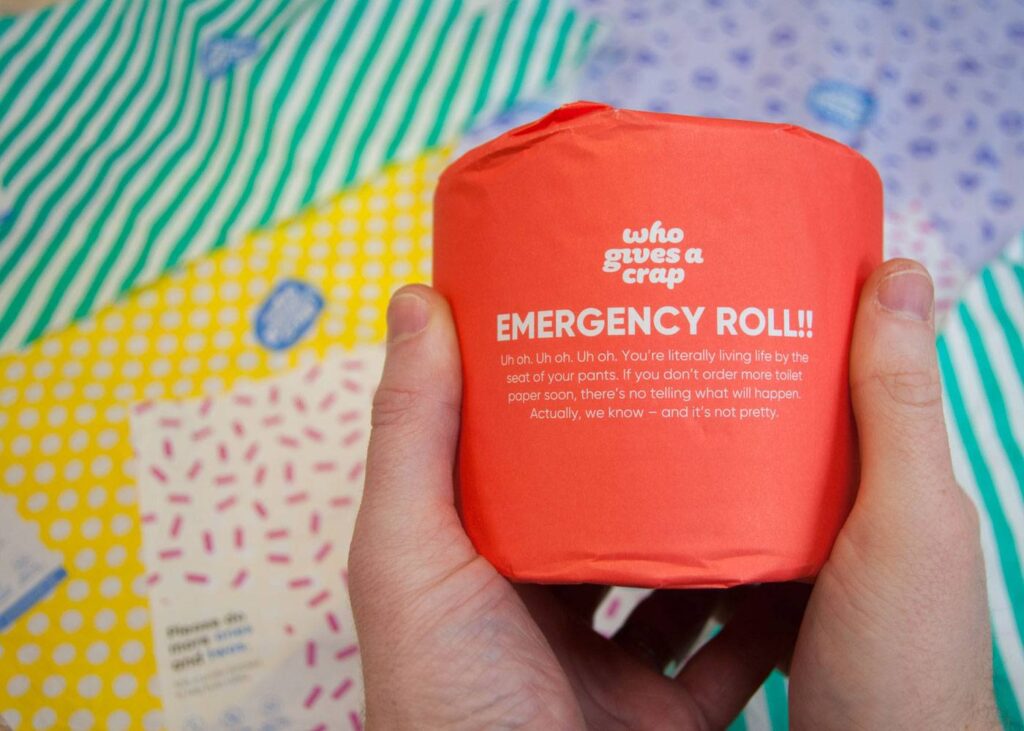
See you next week for more tips and tricks on doing words gooder.
(Fun fact: our brand name uses the Benign Violation Theory by breaking a linguistic norm in an inoffensive way. It should technically be Do Words Well 🤮)
Dive into more free tips and tricks 👇
How Starface use orthography to build a killer brand voice their customers love
The words you write matter. But so do your full stops, emojis and lowercase letters. Learn how to turn punctuation into a powerful part of your brand voice.
Why Oatly’s brand voice is so damn good (and how yours can be, too)
We dig into the three layers of brand voice (10,000ft, 1,000ft, ground level), show how Oatly nails each one and how you can do it for your own brand.
The weekly newsletter that takes your brand’s copy from “meh” to “hell f*cking yeah!”
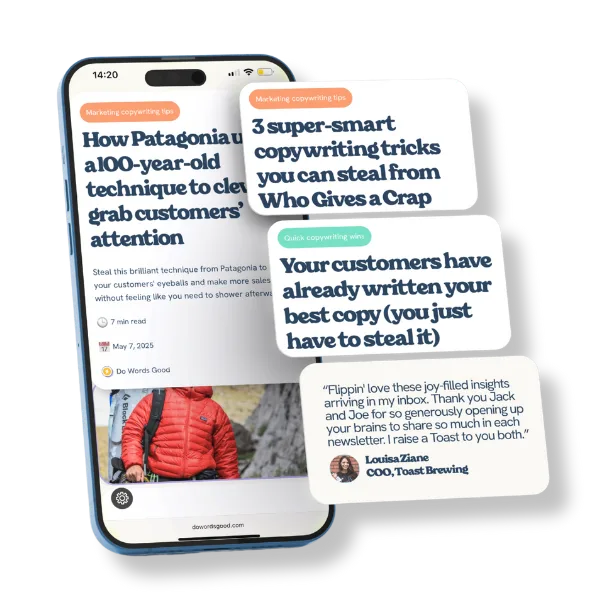
Read every week by legends at brands like these











